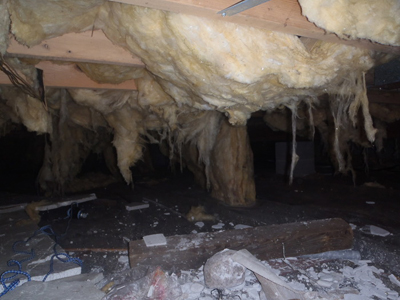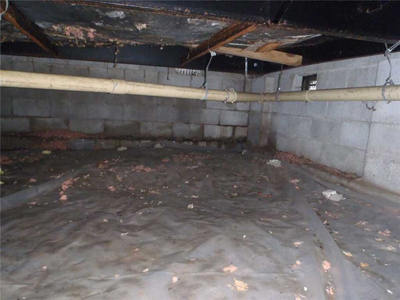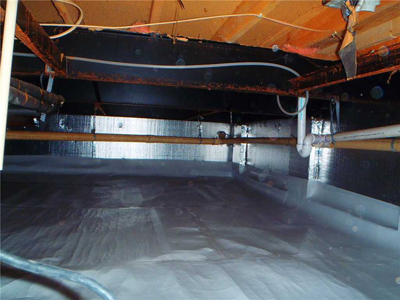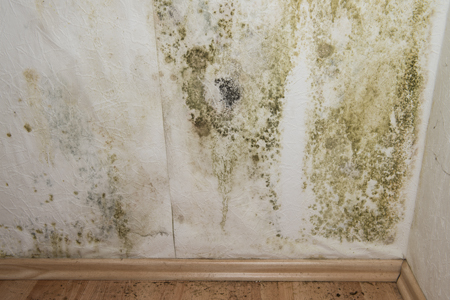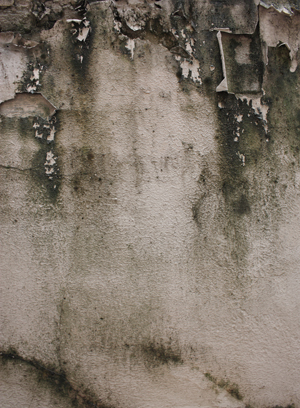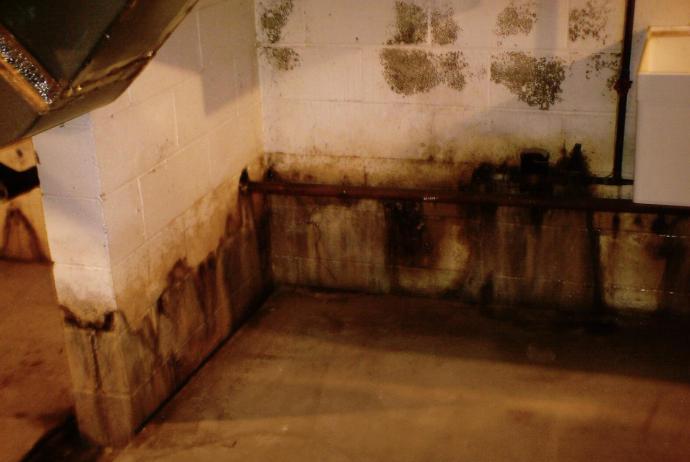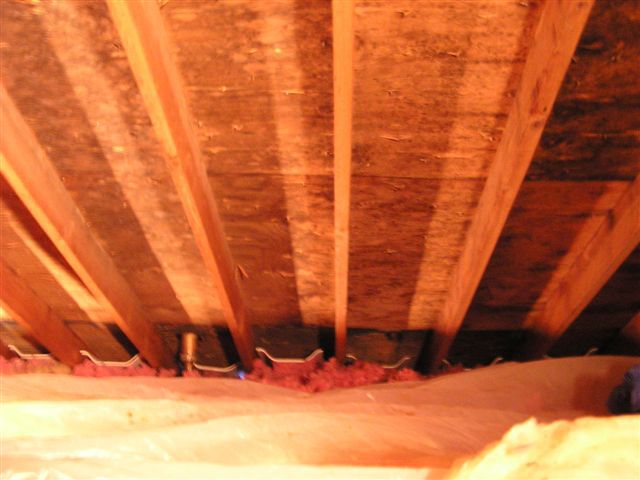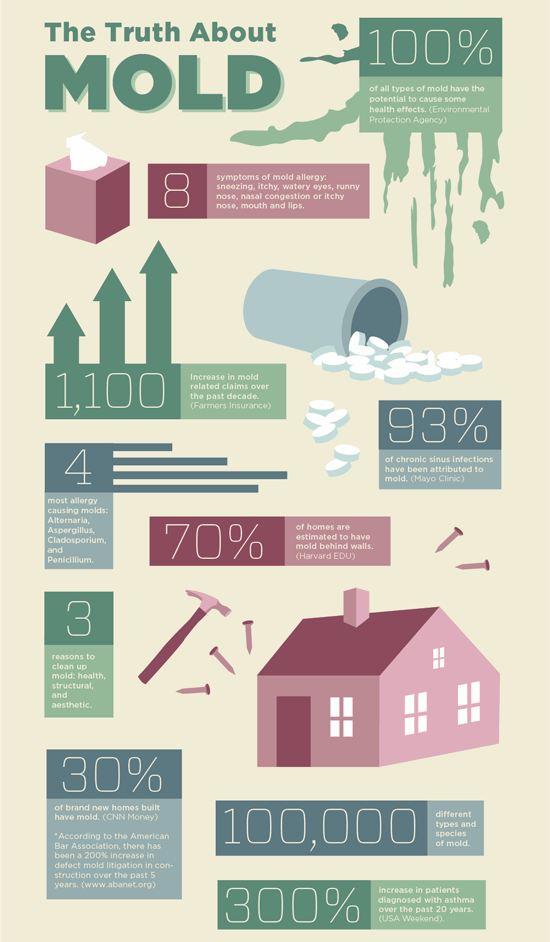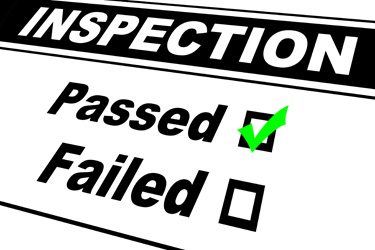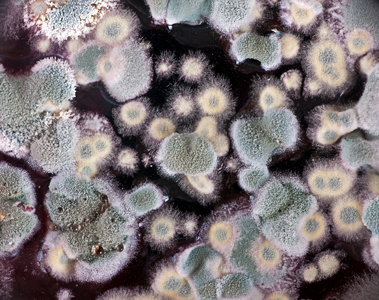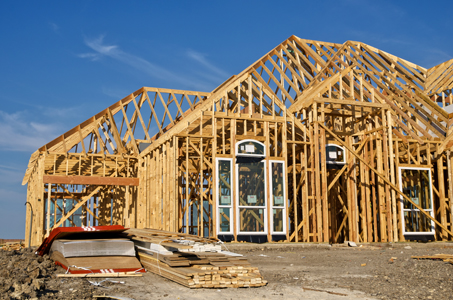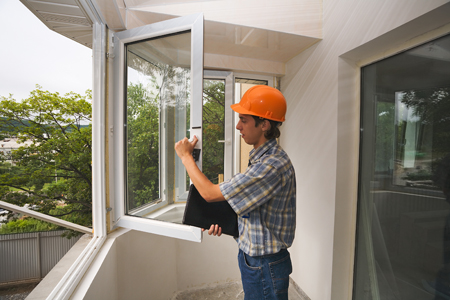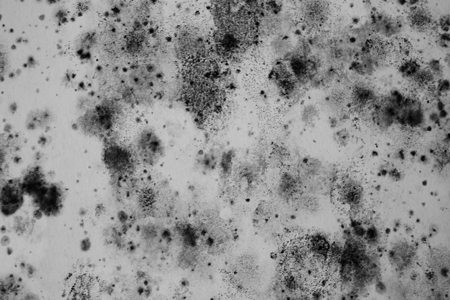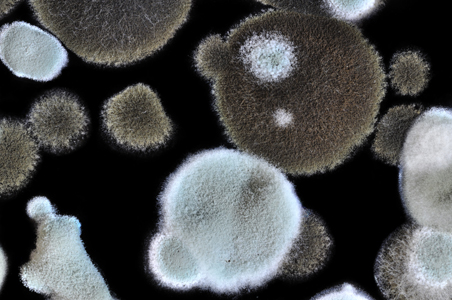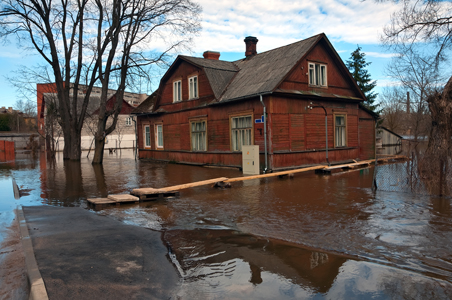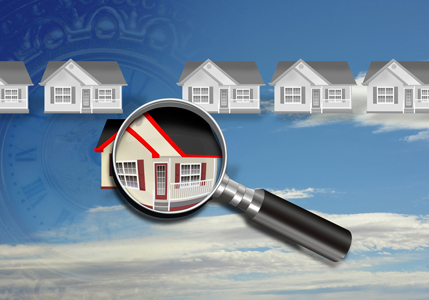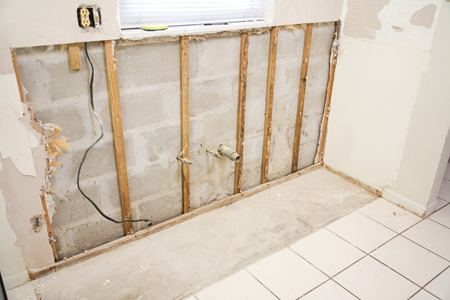
by Eric Brown | May 27, 2016 | Crawlspace Mold, Health, Indoor Air Quality, Killing Mold, Mold Facts, Mold Information, Mold Inspection, Mold Remediation, Mold Removal, Questions and Answers
Top 5 Ways Your Crawl Space Affects Your Home!
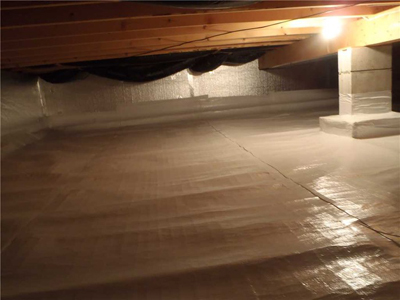
Top 5 Ways Your Crawl Space Affects Your Home!
Crawl Spaces are very popular in Atlanta, Georgia and other southern states for several reasons.
First, they tend to be cheaper than laying a foundation for a basement slab.
Second, crawl spaces make it much easier to access pipes and other utilities.
Third, if the soil is unstable, it is simpler to install a crawl space by bringing the house up to or above ground level.
Finally, there are aesthetic reasons. A raised house makes it look bigger.
The purpose of this article is to explain how and why your crawl space could be contaminating your indoor air.
What’s In My Crawl Space?
If you have not visited your crawl space, take a look. Typically, you will find the following:
- Dirt. Most homeowners have a bare dirt or rock crawl space.
- Ductwork. Many of your home appliances run out through the crawl space area. Washers, dryers, and plumbing pipes are often found running along the ceiling of the crawl space, to be vented or piped to the outdoors or external holding tanks. Ductwork for the home heating and cooling systems are also usually found here.
- Plumbing Pipes. Home plumbing is usually found in your crawl space, funneled outside to your septic tank or the sewer system. These pipes are usually heavy duty so most homeowners are unconcerned about their safety. However, these pipes still require maintenance and care. Changes in temperature during the warmest and coldest months as water flows through them can cause condensation. Condensation and the increase of moisture in the air leads to mold growth.
- Electrical Wiring. Along the ceiling and walls of the crawl space you will usually see electrical wiring. Keeping these safe from the gnawing teeth of crawl space vermin is important.
- Vents. You will also notice various vents along the bottom walls of your house. These vents allow for air movement and ventilation for your crawl space.
- Insulation. Insulation is important. If you see nothing but bare beams and dirt, this is a concern. Up to 40% of your air comes up from the crawl space. You can lose up to 45% of your home’s heating and cooling energy through non-insulated crawl spaces. In addition, non-insulated crawl spaces are will incur mold growth and attract insects, rodents, and other crawl space vermin.
- Vapor Barrier. Vapor barriers help maintain the health of your crawl space and your family. Crawl spaces protected from excess moisture are less likely to develop mold or allow vermin and insects into your home. Vapor barriers protect not only your crawl space, but your entire home.
- Beams. Beams, heavy wooden or metal support structures, keep your home structurally sound. These beams run vertically and horizontally through your crawl space structure.
- Drains/Pumps. You may also notice a drain in the floor of your crawl space. Usually this is a sump pump, a water pump designed to carry any excess water away from the house in the case of a flood. Drains allow excess water to drain away a safe distance from the house, usually 6 feet or more.
- Critters and Other Creepy Crawlers. It’s all too common that a homeowner pokes his head into his crawl space to discover a happy population of insects, mice, rats, squirrels, or even snakes! Getting these invaders out of your home can be challenging. To be safe, call a pest control company.
Four Clues That You Have Issues With Your Crawl Space!
While you are taking a look at your crawl space, give Mold B Gone a call if you find any of these problems:
- Standing Water or Water Damage: Water damage can weaken the foundations and walls of your home, and needs to be dealt with quickly.
- Mold. Mold can be hazardous. If you have large areas of mold spreading across your beams, in your insulation, or along the ground it needs to be removed. Left unchecked, mold can severely damage your home and your air quality.
- Ruined Insulation: No insulation lasts forever, though some types of insulation are more long lasting than others. When insulation is falling to pieces or has rodents nesting in it, it’s time to remove the old insulation and replace it.
- High Humidity: Knowing your crawl space humidity is essential to keeping it clean and safe. Vapor barriers are an important part of a crawl space because it prevents moisture and high humidity, something that creates a breeding ground for mold and pests. If you have a bare dirt floor, crawl space encapsulation is important.
Now that you understand what is in your crawl space and the top four signs that you may have issues with your crawl space, the remainder of this article will list the top 5 ways your crawl space affects your home.
#1 Poor Air Quality
Moisture accumulates in your crawl space because of high humidity, changing temperatures that leads to condensation, rainy weather, and the lack of preemptive solutions, like a vapor barrier. For this reason, it is important that the moisture content of your crawl space is monitored properly.
If the moisture content of your crawl space is not monitored, mold and rot will grow in the insulation or on the wooden beams. When the mold grows, it releases mycotoxins that can seep through the floorboards of your home, which in turn can cause sickness.
Even though the mold is growing under your home, you need to take action because 40% of the air in your home seeps up through the crawl space.
Simply put, if your crawl space has mold problems, then the indoor air quality of your home will be negatively affected.
#2 High Energy Bills
Properly insulating your crawl space will save on utility costs because the insulation prevents temperature transfers. This will ensure that your home stays cool when the air conditioner is running and warm if you need to heat your home during the colder months.
#3 Rodents and Insects
Despite the fact that your crawl space may be surrounded by a thick layer of concrete serving as the foundation, your crawl space may not be as predator-proof.
There are two key reasons that rodents and insects can affect your home.
First, droppings and feces left behind will affect the air quality inside your home.
Second, certain rodents, like squirrels will get curious and start chewing on any exposed electrical wires, ruin insulation, or rip holes in a vapor barrier.
#4 Damaged Subfloor
Moisture accumulation in your crawl space will not only affect the air quality of your home, it can also seep through the ceiling of the crawl space and damage your sub-floor. When this occurs, it will begin to warp and eventually need to repaired or replaced.
#5 Compromised Foundation
More than just the subfloor, however, moisture problems can also cause issues for the foundational level of your home. The wooden beams that hold up your home’s structure can be damaged by consistent exposure to high levels of moisture, condensation, or humidity. In some not-so-uncommon cases, crawl spaces have actually flooded, causing significant structural damage that resulted in thousands of dollars of repair work.
Got Crawl Space or Mold Questions?
Call 678-697-6267, or contact us via e-mail.
We look forward to serving you! 🙂
Crawl Space Contaminating Your Indoor Air Infographic Summary

Crawl Space Contaminating Your Indoor Air Infographic Summary

by Eric Brown | May 19, 2016 | Can Mold Kill?, Crawlspace Mold, Dead Mold Spores, Health, How Toxic Is Mold?, Indoor Air Quality, Killing Mold, Mold and Asthma, Mold Facts, Mold Information, Mold Inspection, Mold Remediation, Mold Removal, Questions and Answers, Stachybotrys Black Mold, Toxic Mold
Atlanta Crawlspace Mold Removal, Mold Prevention, and Encapsulation Experts!

Atlanta Crawlspace Mold Removal, Mold Prevention, and Encapsulation Experts!
Top 3 Questions About Crawl Space Humidity
What’s the threshold humidity level for mold growth?
When the relative humidity of your crawl space is 70% or higher, mold can thrive.
“Relative” humidity is the humidity level expressed in a percentage of the amount of moisture in the air needed for “saturation” (i.e. the highest level of humidity – 100%).
The amount of water the air can hold (humidity level) is dependent upon the temperature of the air itself.
When the humidity level begins to creep up past 70% relative humidity, this provides the perfect environment for mold growth!
I’m seeing condensation. What does that mean?
Condensation is an indication that the air within your crawl space has reached 100%.
The air can no longer hold the moisture and it’s condensing onto the surfaces, causing the organic materials that make up your crawl space to become damp, which will result in mold growth.
How do I know when the humidity in my crawl space is at a dangerous level?
A hygrometer is a device used to measure the humidity of indoor air.
Using this tool to measure the humidity of your crawl space is a great way to monitor the amount of moisture present.
A thermo-hygrometer measures both temperature and humidity level.
These devices are even more ideal for crawl space atmosphere monitoring because the relative humidity level is contingent upon the moisture in the air in relation to the air’s temperature.
Being able to track the changes in both of these conditions in your crawl space will allow you to see trends and anticipate necessary changes.
For instance, if the weather is hot during the day but the temperature plummets at night, this can cause problems for your crawl space’s humidity levels.
The daytime temperature is higher, which allows the air to hold more moisture.
As night approaches and the air cools, the amount of moisture the air can hold also decreases – causing the relative humidity level to rise.
A crawl space that was at a permissible humidity level during the day can run into problems when night falls.
Being able to see these changes on your thermo-hygrometer can help you identify these types of trends so that you can respond appropriately.
Keep in mind that properly insulating your crawl space and installing vapor barriers will help regulate the temperature and keep moisture levels down, resulting in less fluctuations in the air’s relative humidity.
Humidity Levels In Your Crawlspace Affect The Rest Of Your Home
Having unconditioned air below your living spaces makes the whole house harder to heat and cool as well as provide the perfect damp setting for mold spores to breed.
In the past, we were told that crawlspaces needed to be ventilated. Now, however, we are learning that crawlspaces need to be treated almost as if they were living spaces. In other words, areas that are in contact with your living space affect your living space. So if you have a crawlspace, what solution is available?
Mold-B-Gone Remediation, LLC can help you dry out the dampest crawlspaces and turn them into drier, healthier foundations for your home that aren’t breeding grounds for mold spores.
Crawlspace Solutions
Turning crawlspaces into dry spaces!
Our Dry-space technique combines the following:
- A thorough cleaning of the space, including mold remediation.
- Installation of a wall-to-wall guide, durable, 14 mil vapor barrier.
- Attachment of the vapor barrier over ground and up sidewalls to 6 inches below floor joists.
Crawlspace Encapsulation (Before and After Photos)
[huge_it_gallery id=”3″]
The result is an energy efficient, healthy home. Mold-B-Gone Remediation, LLC’s dry space methods described above not only helps mold-proof your home, but the combination of these methods will make it more energy efficient and comfortable. For more information on our crawlspace solutions, contact us today.

by Eric Brown | May 15, 2016 | Basement Mold, Flood Clean Up, Health, Indoor Air Quality, Mold Facts, Mold In Apartment, Mold Remediation, Mold Removal, Questions and Answers, Water Damage Restoration
10 Tips To Prevent Basement Mold!

10 Tips To Prevent Basement Mold!
A common question we face is how do I prevent mold in my basement, particularly after a water damage event.
This article provides you with ten tips to prevent mold in your basement.
Implement these tips to avoid future headaches and costly mold removal in the future.
#1 Fix The Flooding Source!
The first step to preventing future flooding is to determine the cause and fix it. Most basements flood because of backed up drains, leaky pipes, human error (i.e. leaving a tap on), sewer back ups, the lack of a sump pump and/or a malfunctioning sump pump.
#2 Start The Clean Up As Soon As Possible!
The onset of mold will begin within 24 to 48 hours, so it is essential that you begin the clean up immediately.
#3 Hire Experienced Professionals!
If mold is not properly contained and cleaned properly, it can become airborne and contaminate even larger areas of the property.
You need to hire properly trained professionals, like Mold B Gone, who understand how to properly restore a water damaged property and prevent mold growth. Mold growth prevention is important because of the health impact it has and also because mold will impact the structural integrity of the property.
#4 Remove All Wet and Contaminated Materials!
Most insurance companies will not recommend a complete gut for cost savings. Usually they recommend that it is necessary to only remove one foot of drywall above the flood line.
We do not because this could result in long term mold problems because moisture can creep up behind the surface. For this reason, we recommend a complete gut of the basement because the extra short term cost could result in significant long term cost savings.
The last thing you want to happen is for a reconstruction to occur only to find out six months later that you now have a mold problem.
Removal of all the drywall is not our only recommendation. We also suggest the removal of following: all flooring, including the sub-floor; insulation because it absorbs moisture; and finally, if the electrical panel was submerged under water, it should be replaced as well.
#5 Avoid Using Bleach For Clean Up!
As stated by Michael Pinto, CEO of Wonder Makers Environmental:
“Perhaps the most misunderstood aspect of bleach when proposed as a cleaner or sanitizing agent is that its effectiveness is greatly reduced in the presence of organic material. To be a successful sanitizer, bleach must be used on clean materials and surfaces. This is why bleach products are used in the laundry after the wash cycle or in a commercial kitchen as a component in the third sink after the dishes have been washed and rinsed. The efficacy of bleach as a sanitizer is also compromised by heat and light. Despite the fact that the chlorine odor may linger for some time after use, bleach loses strength so quickly that it is not considered to have a residual effect that would prevent future bacterial or fungal growth.”
#6 Do Not Begin Any Rebuild Until the Basement Is Completely Dried Out!
We understand that a flooded basement disrupts your life and you want to resume your normal routine as soon as possible. However, patience is the key.
To avoid any future mold issues that could make you sick, measure the humidity levels and ensure that job was done properly by hiring a third party to perform an indoor air quality test.
In addition, if the flood water was category 3, we recommend that swab tests be performed to ensure that the cleaning process was done effectively.
Only after it is verified that the basement is completely dry and sanitized and clearance testing verifies that the indoor air quality is healthy should the basement rebuild begin.
#7 Properly Insulate Your Basement!
According to Mike Holmes, a respected contractor, insulation is one of the most important factors in preventing basement mold:
“When air, which is full of moisture, leaks into that insulation, it will inevitably lead to mould. Here’s why: Your basement, like every room in your home, has its own natural air convection. The air nearest the ceiling is warmer, and the air nearer the floor is cooler. The cold air at the bottom pushes the warm air up. As it rises, it comes into contact with the cooler exterior wall and releases the moisture it’s holding. It condensates. That air and moisture — if it’s able to get into the batt insulation through a gap in the seal — will wick into the insulation. Over time, it will soak that batt to the point that water can drip down the walls and pool on to the floor….You need a thermal break to stop hot from meeting cold….So, use closed cell spray foam insulation or rigid foam insulation, which will provide a thermal break and not trap any moisture. If you’re using foam insulation boards, make sure you Tuck Tape every seam, and spray-foam all corners and joints to create a 100% seal and a perfect thermal break. That way, you’ll know that anything you do inside your finished basement won’t have to be torn out in a few years because of mould.”
#8 Cross-Ventilate!
If possible, open the windows on all sides of your basement in the evenings when the air is cooler to create a cross-ventilation air flow which will prevent excessive moisture and also ensure that a steady stream of fresh air is circulating throughout the basement.
#9 Ensure Water Drains Away From Your Home’s Foundation!
One of the most effective ways to prevent water intrusion is to ensure that water is not sloping towards the foundation of your home but away from it. This is particularly important if your basement walls are porous and can trap moisture, which can lead to mold. To avoid this, ensure that the ground slopes away from the foundation walls of the home and your downspouts extend at least 6 feet away from the property.
#10 Invest In A Dehumidifier!
To prevent excess moisture in your home, use a dehumidifier and consider waterproofing your basement by sealing cracks in the floor and walls with hydraulic cement and a concrete waterproofing sealer where the floor meets the walls.
Got Mold Questions?
Call 678-697-6267, or contact us via e-mail.
We look forward to serving you! 🙂

by Eric Brown | May 6, 2016 | Air Conditioning, Attic Mold, Basement Mold, Beware Of Mold When Buying A Home, Bleach and Mold, Can Black Mold Poison You?, Can Mold Kill?, Chronic Inflammatory Response Syndrome (CIRS), Crawlspace Mold, Dead Mold Spores, Flood Clean Up, Health, How Toxic Is Mold?, Indoor Air Quality, Killing Mold, Mold Facts, Mold Information, Mold Inspection, Mold Remediation, Mold Removal, Questions and Answers
Atlanta Mold Testing, Mold Remediation and Mold Recovery Experts!

Atlanta Mold Testing, Mold Remediation and Mold Recovery Experts!
Got a mold concern, call 678-697-6267.
Water is a vital necessity for life, but when it becomes uncontrolled, it can cause devastation. Whether your property has been damaged by a torrential downpour, a triggered sprinkler system or busted pipes, Mold B Gone can help.
Water can cause much more serious damage than just getting things a little soggy. In many cases the damage to the structure is not confined to just the water line. The drywall, wood, and even concrete used in many structures can act as a sponge which will then cause the water damage to extend much higher and deeper into the structure. Also mold growth can happen after a period of time and often will appear long after the water damage.
Mold comes from excessive moisture or water accumulation indoors. While it is impossible to eliminate all molds and mold spores, controlling moisture can control indoor mold growth.
All molds share the characteristic of being able to grow without sunlight. Mold only needs a viable seed (spore), a nutrient source, moisture, and the right temperature to proliferate. This explains why mold infestation is often found in damp, dark, hidden spaces. If left unchecked, molds gradually damage building materials and furnishings. Eventually mold can cause structural damage to a wood framed building, weakening floors and walls as it feeds on moist wooden structural members. This is a particular concern if you have mold growing in your crawl space.
The purpose of mold remediation is to correct the moisture problem and to remove moldy and contaminated materials to prevent human exposure that can impact health and further damage to building materials and furnishings.

Atlanta Mold Testing, Mold Remediation and Mold Recovery Professionals!
Mold Recovery: Four Steps
If you think you have mold, you should take these important steps now to prevent more damage to your home or business and more importantly, avoid health problems.
- Call us to discuss your mold issue. At that time we can perform a mold inspection and if required, test the indoor air quality to determine the spore count and mold species.
- If swab, tape, or indoor air quality tests are done, these will be sent to an accredited third party lab for the results. This report is used to scope the job for cleaning and repairs. Our Mitigation Project Manager will then discuss the cleaning process with you.
- Once the area is has been mitigated, a Third Party air quality consultant will do a second air test to be sure that the air in your home or business will not promote further mold growth. Please note, some customers prefer the Third Party air quality consultant to do both the pre and post testing which we can arrange for you.
- If your home was damaged by an insurable water emergency, like a flood or sewer backup, and your property needs reconstruction, our Project Manager will refer you to a reconstruction contractor we work with to survey the damage and discuss in detail your options and steps for rebuilding. If the mold is found in your basement, we offer a basement build out service as well. If your home experienced a sewer backup, we also can sanitize your home for you as well. Once you select us to perform the reconstruction work, we will require your authorization to work with your insurance company. We will then submit the estimate to your insurance company and work with them to reach an agreement on the cost to complete the repairs. We work for you and our goal is to get your home or business back to its pre-loss condition as quickly as possible. When the work is completed you will be asked to sign a Certificate of Satisfaction stating that you are satisfied with the restoration. This will be submitted to the insurance carrier for release of the final payment.
Got Mold Concerns?
Call Mold B Gone, 678-697-6267 or send us an e-mail. We are Atlanta’s leading certified experts for mold testing and mold remediation. With over two decades of experience and thousands of successful homes, you can trust us to take care of any mold remediation problem that you may have with the utmost care for you and your home.
Mold Summary Infographic

Atlanta, Georgia Mold Summary Infographic!

by Eric Brown | Apr 22, 2016 | Beware Of Mold When Buying A Home, Health, Indoor Air Quality, Mold Facts, Mold Information, Mold Inspection, Mold Remediation, Mold Removal, Questions and Answers
How Reliable Is Your Home Inspection?

How Reliable Is Your Home Inspection?
It’s that time of year when the real estate market begins heating up in Atlanta, Georgia. More houses on the market to fill the need of anxious home buyers.
Many homes built since the 1970s are showing signs of mold growth because of the oil crisis that occurred. This event encouraged home builders to make the homes more air-tight, meaning there were less drafts that brought outdoor air into the home.
This trend to energy efficiency has led to mold problems because mold needs water and moisture to thrive and the air-tight environments trap moisture in.
The upside is energy efficiency has saved you costs on utilities.
The downside, indoor air quality has suffered because of mold growth! This has led to higher incidences of mold related illness and reduced home values because mold literally feeds on the home, impacting its structural integrity.
The major problem with mold is that it can be hidden. You could have mold in your home and not even know that you have it. Sometimes the only clue that you have mold is family members may be getting sick more often. The problem with hidden mold is the mold spores are not visible and because of modern day HVAC systems, the air borne spores will continue to be circulated in your home, thereby spreading the spores in every room of your home.
As a home seller or home buyer, you need to be aware of the potential concerns caused by mold.
If you are selling your home and know that you have mold, had past water leaks that have been fixed and/or experienced a major water event like a flood or sewage backup, you should disclose this information to the realtor listing your home to avoid potential litigation.
In a perfect world, the home seller will disclose this information, but let’s face it, we are not living in a perfect world.
When a home seller wants to sell their home, their objective is to list the property and get the highest price for their home. This is the reason they get the help of a realtor.
The only way home buyers can protect themselves is to take matters into their own hands and make sure that the home they are buying does not have mold or moisture concerns that could lead to mold.
Most home buyers rely on the expertise of their home inspector, but as this article explains, can you really just rely on the opinion of your home inspector? Are they experts in mold? Most home inspectors are not and they rely on the goodwill of referrals from realtors, so there could be an inherent conflict of interest.
This article explains why you should submit an offer to purchase, subject to a home inspection AND a mold inspection. It also reveals the top 3 reasons to have a mold inspection before buying a home.
What Is Mold?

What Is Mold?
A fungus, some molds are visible, in various colors–black, white, green, gray–and will likely give off a smell.
Mold is nature’s recycler. It is everywhere because it has an important purpose in our eco-system: to breakdown and eat dead organic matter.
Mold needs three important ingredients to grow.
First, a food source, dead organic material like wood, paper, carpet, etc.
Second, the ideal temperature of 41 degrees fahrenheit up to 100 degrees fahrenheit.
Third, and most importantly, moisture. Without moisture, mold will not grow.
Why Is Mold A Problem?
Aside from the structural and health concerns (asthma and chronic sinusitis for example) that mold poses, the other major concern is that mold is often out of sight and difficult to see.
Common reasons and areas of the home that mold can be found include:
- Around leaking pipes, windows, or roofs. Water provides mold spores the moisture they need to grow.
- Basements or other areas of the home that have flooded and were not dried properly.
- Common with new construction is the practice of tightly sealing the building, which can trap moisture leading to mold growth.
- Poorly ventilated homes that does not enable outside air to circulate in the home.
Some other clues that there could be mold in the home include the following:
- Water stains on the walls and ceilings.
- Musty odors in areas of the home like the bathroom, kitchen, laundry room, and basement, where leaky pipes are commonly found.
- Standing water in the basement.
Be particularly careful if you are looking at purchasing a foreclosed home. These homes are susceptible to mold growth because cost saving measures by the banks usually means they will shut down the HVAC system, which is a major concern because it results in high humidity levels and ultimately mold growth.
Recently renovated homes are another concern because improperly trained contractors or the home seller could have found mold, but not addressed it properly.
A Brand New Home Could Have Mold!

A Brand New Home Could Have Mold!
If you are buying a new home, you may think that mold will not be an issue either. New does not necessarily mean mold free for several reasons:
- The trend towards building energy efficient homes may save money on heating and cooling. The negative, however, is that by building homes so that they are air tight could result in a lack of proper ventilation, leading to mold growth.
- Simple construction errors like installing the vapor barrier when there is moisture present. This error will lead to mold growth because the moisture is trapped.
- The time of year the home was built could also be a factor. If the home was built when there was lots of rain and the foundation was not allowed to completely dry before installing the insulation and vapor barrier, then moisture could be trapped behind the walls.
- Cost saving construction measures is another factor. Home builders are using more Orient Strand Board (OSB) and less plywood and timber which provided some resistance to mold because these materials are semi-porous. In contrast, OSB and particle board are porous and susceptible to mold growth.
Top 3 Reasons To Have a Mold Inspection Before Buying a Home
Aside from the peace of mind that mold inspection offers, here are the top three reasons why you should consider a mold inspection when you buy a home:
1. Mold Remediation Can Be Costly!
2. Real Estate Agents Are Not Mold Experts!
3. Home Inspectors Are Not Mold Experts!
#1 Mold Remediation Can Be Costly!

#1 Mold Remediation Can Be Costly!
As stated in an earlier article, the cost of mold remediation will depend on three key factors:
1. How much of the area is infected with mold?
2. What kind of materials are infected?
3. How easy is it to access the mold?
On average, the typical household mold removal project will range from $2,000 to $6,000, but can be as high as $30,000 or more depending on the extent of contamination.
Considering the potential cost of mold removal, you are much better off finding out if there is a potential mold problem before purchasing the home. A mold inspection will provide you with the data you require to make an informed decision.
Best case scenario, no mold is found. Worst case scenario, mold is found, but then if you still have your heart set on the home, at least you now have some negotiating power to bring down the price so the home can be properly remediated before you move in.
#2 Real Estate Agents Are Not Mold Experts!

#2 Real Estate Agents Are Not Mold Experts!
The goal of every real estate professional is to list and sell homes. They will only make their commission when the property sells, so they have significant motivation to do what it takes to facilitate the sale. Their end goal is pretty defined: sell the home and collect the commission.
In addition, real estate agents are sales and marketing professionals, they are not construction experts and likely know very little about mold, where it could be found, and why it is a problem.
When listing a home, the agent is relying on the honesty and integrity of the seller who fills in a property disclosure form. If the seller fails to disclose a mold problem that has not been fixed and is trying to hide the mold problem by painting over it or trying to hide it, how is the agent going to know. How will you know?
Buyers should pay close attention to the property disclosure form because it could provide you with clues of potential moisture problems that could cause mold. Some clues include YES answers to these types of questions:
- Is the property in a flood hazard area or an inland wetlands area?
- Does the home have basement water, seepage, or dampness issues?
- Has the home had roof leaks?
- Does the home have any rot and water damage problems?
- Does the home have any water drainage problems?
- Does the home have any sump pump problems?
#3 Home Inspectors Are Not Mold Experts!

#3 Home Inspectors Are Not Mold Experts!
Mold sickness is considered a hidden epidemic for two key reasons. First, most physicians are not trained to identify or treat mold illness. Second, most homes have mold, but the owners do not realize they have mold because it is hidden.
Since some people get sick from mold and other’s do not, a family could have been living in a moldy home and never experienced any major health concerns. In short, a seller of a home could have mold and not know because mold can be hidden underneath carpet, a new paint job, baseboards, behind walls, above ceiling, etc.
Taking this into consideration, when you hire a home inspector, their primary concern is not to identify if the home has mold. Rather, they are inspecting the overall structural integrity of the home, the roof, wiring, bathrooms, plumbing, etc.
A home inspector may point out water stains or moisture concerns in areas of the home, advise you that your basement has an odor, identify water seepage or a leaky roof, but they will not tell you if you have mold, what type of mold you have, and how extensive the mold problem is.
As a final note, like many business owners, home inspectors rely on referrals. Not surprisingly, one of the biggest sources of referrals tends to be real estate agents, whose primary objective is to sell property. Mold concerns present challenges to home sellers and their agents. Could there be a potential conflict of interest?
Mold Inspections Are Important!
The process of buying a home is an exciting process. You have big plans for your new home! You are looking forward to the future in your dream home to raise your family.
But in all the excitement, many home buyers forget about the future problems that mold and past moisture issues could have caused. This fact is ignored because many home buyers think a home inspection is a enough to protect them from future and costly repair problems. This is the #1 mistake home buyers make; home inspectors are not mold experts!
The worst case scenario is you move your family and all your possessions into your new home and eventually discover mold. Now what? You can ignore the problem which could cause future health and structural concerns for your property or you make the financial decision to deal with your mold problem.
Both options can be costly. Ignoring the problem will reduce your property value as the mold eats away at your home, not to mention the potential health issues. Addressing the mold concern can also be costly because proper remediation needs to be done by professionals.
Likely, the last concern you have when you are purchasing a home is the potential problems that mold could cause. Once you find your dream home, you want to submit your offer and close the deal.
However, I caution against being too hasty. In addition to hiring a reputable home inspector, seriously consider the services of a mold inspector.
Mold inspectors are trained to not only identify the moisture issue causing the mold but will also provide you with information on what type of mold is growing in your home and how extensive the problem is.
As mentioned earlier, the best case scenario is that no mold is found in your home.
However, if the mold inspector does find a mold problem it is better to be aware of the problem so that you can adjust your offer, subject to mold removal by the seller along with proper clearance letters. If the seller does not want to cover the cost of the removal, then at least you can factor in the cost of the mold removal into the purchase price.
Bottom line, it is better to be safe and informed, then sorry. The relative cost of a mold inspection is minor compared to the overall investment into the home and the potential costly headaches you will face if you have to pay for mold removal in the future.
Questions? We are mold inspection, detection, and removal experts. Call us, 678-697-6267, or contact us via e-mail. We look forward to serving you! 🙂

by Eric Brown | Apr 15, 2016 | Air Conditioning, Attic Mold, Basement Mold, Beware Of Mold When Buying A Home, Bleach and Mold, Can Black Mold Poison You?, Can Mold Kill?, Christmas Tree Mold, Chronic Inflammatory Response Syndrome (CIRS), Crawlspace Mold, Dead Mold Spores, Flood Clean Up, Health, How Toxic Is Mold?, Indoor Air Quality, Killing Mold, Mold and Asthma, Mold and Depression, Mold and Infants, Mold and Multiple Sclerosis, Mold and Parkinson's Disease, Mold and Pregnant Women, Mold and Sids, Mold and Sinusitis, Mold Facts, Mold In Apartment, Mold In The Bible, Mold Information, Mold Inspection, Mold Remediation, Mold Removal, Mold Removal Cost, Mold Risk During Renovation, Mold Sensitized Success Story, Questions and Answers, Sewer Backup, Sippy Cup Mold, Stachybotrys Black Mold, Top 15 Mold Prevention Tips, Toxic Mold, Water Damage Restoration
The Ultimate Mold Education Resource

The Ultimate Mold Education Resource
The goal of Mold B Gone is to educate our customers about mold. We strongly believe that an educated and informed consumer can make better decisions when they have concerns about mold.
Included in this article are 36 links to articles that will help you learn about mold.
Please bookmark this page because we will update it with new articles as they are researched and published.
If you have questions about mold removal, crawl space mold removal and encapsulation, other services we offer, and/or our 1 year up to 25 year guarantee, call us, 678-697-6267, or send us an e-mail. We look forward to serving you. 🙂
Mold Facts and Information (7 Articles)

Mold Facts and Information (7 Articles)
Priests were the equivalent of today’s mold inspectors. This article lists the three passages cited in Leviticus. Learn more!
Mold Fact 1: The Key Ingredient Mold Needs To Thrive Is Moisture. There are 9 more mold facts explained in this article. What do you think they are?
Top 4 Reasons Mold Grows In Your Attic! The purpose of this article is to explain why mold grows in your attic and prevention tips.
Top 3 Reasons Your Crawlspace Has High Humidity. This article explains why your crawlspace is humid, why this leads to mold and how you can fix the problem!
Steps Residents Can Take If They Have Mold In Their Apartment! This article explains what you can do if you find mold in your apartment. Learn more!
Top 10 Reasons Mold Is Scary!
Here are the top 10 reasons we believe that mold is scary. Enjoy!
This article provides you with information to help you determine if you have a mold problem and explains what you should and should not do if you do find mold.
Black Mold (2 Articles)

Black Mold (2 Articles)
Recently a news article featured a woman who believes that she was poisoned by toxic black stachybotrys mold. This article explores this topic further!
Stachybotrys is considered the king of molds because exposure to this toxic black mold causes 15 serious health conditions. Learn more!
Mold and Health (13 Articles)

Mold and Health (13 Articles)
Wondering if you are sensitive to mold? This article explains how to determine if you are mold sensitized, seeking treatment, and the next two steps to health!
This article explains why mold can be toxic, listing 10 specific health conditions. Learn more!
Potential Health Complications Mold Exposure Has On Pregnant Women and Infants! Questions answered about SIDS, asthma, miscarriage, and pulmonary hemorrhage.
This article article explains why mold grows on sippy cups, why it could make your child sick, and how you should properly clean the sippy cup!
Mold Remediation Improves Health! This article explains why, citing an interview with Jack and Helen Graham, a Mold Sensitized Success Story!
Could Some People Diagnosed With Multiple Sclerosis Actually Be Suffering From Mold Sickness? This article explains how and why. Learn more!
One in Three people get sick from their Christmas tree. This article explains why and what you can do to feel better. Learn more.
Why Do Some People Get Sick From Mold And Others Do Not? This article explains why 1 in 4 people have a genetic predisposition to mold illness.
This article explains why many suffering from CIRS are diagnosed with depression caused by mold. Both scientific and anectodal data are cited. Learn more!
Does Mold Cause Parkinson’s Disease? The purpose of this article is to explain why and how mold could be a possible cause of Parkinson’s Disease.
Top 3 Reasons Mold Sickness Is A Hidden Epidemic! You could be sick from mold and not even know it. This article explains why mold is a hidden epidemic!
37 million Americans suffer from sinusitis. Cause? This article lists the top 10 stats and facts citing MAYO clinic research that believes mold is the cause!
According to the CDC, rates of asthma among children in Georgia is 3% above the national average. Is mold a factor? This article cites stats and research!
Water Damage and Mold (4 Articles)

Water Damage and Mold (4 Articles)
Concerned about sewer backups? This article explains what causes sewers to backup and how you can prevent this from happening. Learn more!
Flood and water damage not only disrupts your life but can also be hazardous to your health! This article explains the top 3 hazards and prevention measures!
A flooded home or business is always a stressful situation. This blog provides you with the 3 steps required to reduce flood damage and most importantly, mold!
Water damage restoration restores a property to pre-loss condition after a flood. Check out the top 3 facts. Hint: Mold is not the only concern.
Mold Inspection and Prevention (7 Articles)

Mold Inspection and Prevention (7 Articles)
Mold growth can be prevented. This article list the top 15 mold prevention tips, to help you live in a mold free home.
Top 3 Reasons A Mold Inspection Is Essential! This article explains why you should submit an offer to purchase, subject to a home AND mold inspection!
Home improvement is an American tradition. But, did you know that 6 out of 10 homes could have mold? Renovating can cause serious problems. Learn more!
If you are concerned about mold in your basement or your basement was recently flooded, implement these 10 tips to prevent mold growth. Learn more!
If you or someone in your family suffers more frequently from colds or flus and you are not sure why, the cause could be poor indoor air quality. Learn more!
The purpose of this article is to explain how you air conditioner could be a source of mold contamination making you sick and what you can do to fix it.
Wonder what happens during a mold inspection? This article answers all your questions, listing the top 4 actions taken by reputable inspectors.
Mold Removal (3 Articles)

Mold Removal (3 Articles)
Have a mold concern, wondering what it will cost to remove? This article provides you with a detailed explanation of how mold removal cost is determined!
Mold sprays, bleach, biocides, and fungicides are an ineffective “short cut” to mold removal. Killing mold is not the answer! This article explains why.
Mold Removal Is Referred To As Mold Remediation Because Professionals Follow These 8 Steps. This article explains the steps and why you need to hire a pro!
